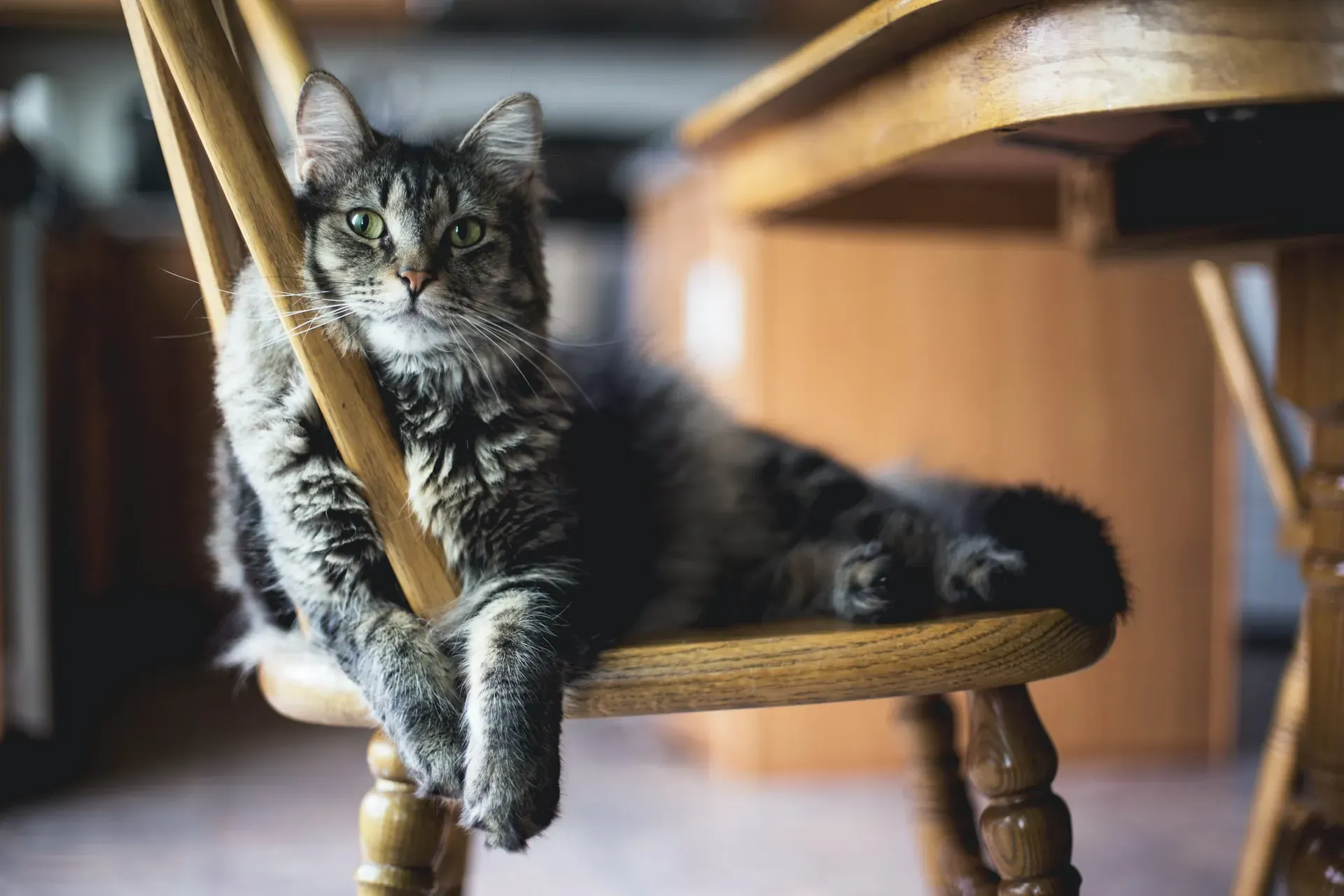Published: October 13, 2023
Last Updated: March 20, 2025
1. Hide cords and wires
Cats are naturally drawn to cords and wires, which can be dangerous if they chew on them. To prevent this, consider using cord protectors or hiding them behind furniture. Additionally, secure any loose cords and keep them out of your cat's reach. This simple step can help avoid electrical hazards and keep your pet safe.
2. Choose pet-safe plants
Many common houseplants are toxic to cats. Before adding greenery to your home, research whether it's safe for felines. Opt for pet-friendly plants like spider plants, catnip, or cat grass. These not only provide entertainment for your cat but also ensure their safety.
3. Lock away harmful chemicals
Household cleaners, chemicals, and medications should be stored securely in cabinets that your cat can't access. Cats are notorious for knocking things over and ingesting harmful substances can be life-threatening. Always double-check that potentially toxic items are out of reach.
4. Secure rubbish bins
Cats are known for their love of rummaging through bins. To prevent this, invest in rubbish bins with secure lids or store your bins in a cabinet with a childproof lock. This will help keep your cat away from potentially dangerous items and messy spills.
5. Choose cat-friendly furniture
Cats love to scratch, and your furniture may become their favourite scratching post if you're not prepared. Invest in scratching posts and pads to redirect their natural behaviour. Additionally, consider using slipcovers on your furniture to protect it from scratches and shedding.
6. Create safe hideaways
Cats often seek out quiet, cosy spots to relax. Provide them with designated hideaways, such as cat beds or enclosed spaces, where they can feel safe and secure. This can also help reduce stress, especially in multi-pet households.
7. Secure heavy items
Cats are notorious climbers who might attempt to scale shelves or other high places. Ensure that heavy objects are securely anchored to prevent accidents. Consider installing safety latches on cabinets to keep inquisitive paws out.
8. Check for escape routes
Cats are known escape artists, and even indoor cats can slip through open doors and windows. Ensure all screens are secure, and consider using childproof locks on doors if needed. A lost cat can be a heart-wrenching experience, so take precautions.
9. Use litter box covers
Litter boxes can be messy, and some cats like to kick litter around. Using a covered litter box can help contain the mess and prevent your cat from digging too energetically.
10. Invest in pet insurance
No matter how careful you are, accidents and unexpected health issues can happen – so it’s important to consider investing in pet insurance for your feline friend. Having the right insurance can provide peace of mind and ensure your cat receives the best possible care when needed.
Creating a safe environment is easier than you think
Cat-proofing your home is about creating a safe, comfortable environment for your feline companion while protecting your belongings and ensuring a harmonious living space. But it doesn’t have to be difficult – by following these simple steps, you can enjoy the company of your curious cat while keeping them out of harm's way.
If you would like to know more about insuring your cat, including who the best pet insurance providers are for you – why not take a look at our free pet insurance comparison tool?
Was this article helpful?
